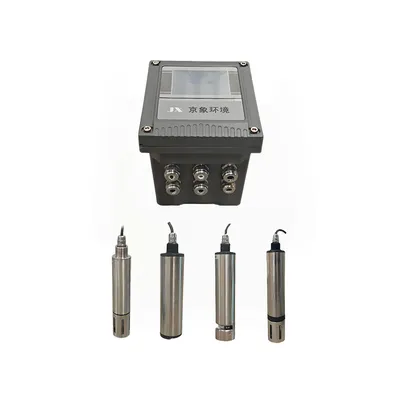Water clarity is more than an aesthetic quality; it is a fundamental measure of safety, sustainability, and operational efficiency across industries. Turbidity, which refers to the cloudiness of water caused by suspended particles such as silt, microorganisms, and organic matter, has long been used as an indicator of water quality. Measuring it with accuracy, however, requires more than traditional visual inspection. This is where the turbidity sensor probe has established itself as an essential tool. Designed for precision, durability, and real-time monitoring, turbidity probes play a vital role in drinking water treatment, wastewater management, aquaculture, and environmental research.

What is a Turbidity Sensor Probe?
A turbidity sensor probe is a specialized instrument that measures the degree of light scattering caused by particles suspended in water. Using optical principles, it detects how much light is deflected when passed through a water sample and translates that into turbidity values, often expressed in Nephelometric Turbidity Units (NTU).
Unlike basic laboratory meters, a probe can be immersed directly into the water source, allowing continuous or in-situ measurement. This makes it particularly useful in dynamic environments where turbidity levels can change rapidly, such as rivers, reservoirs, and treatment facilities. Many modern turbidity probes are designed to withstand harsh conditions, offering reliable data even in sediment-heavy or biologically active waters.
Importance of Turbidity Measurement
The significance of turbidity monitoring extends far beyond clear water aesthetics. In municipal water systems, elevated turbidity may indicate the presence of pathogens, as suspended solids can shield microorganisms from disinfection processes. In wastewater treatment, turbidity readings help ensure that effluent released into the environment meets regulatory standards.
For aquaculture operations, water with excessive suspended particles can stress aquatic organisms, leading to reduced growth and increased mortality. Environmental scientists also rely on turbidity probes to study erosion patterns, sediment transport, and the ecological impacts of urbanization. In each case, the probe provides critical data that supports timely decision-making and sustainable water management practices.
How a Turbidity Sensor Probe Works
At the heart of a turbidity probe lies an optical system. A light source—typically an LED or laser—projects a beam into the water. A detector, positioned at a specific angle, measures the intensity of light scattered by suspended particles. The more scattering that occurs, the higher the turbidity reading.
There are two common measurement methods used in turbidity probes. Nephelometric designs measure light scattered at 90 degrees, providing high sensitivity for low-turbidity samples. Attenuation-based probes measure the reduction of light intensity as it passes directly through the sample, making them better suited for water with high particle concentrations.
Advanced turbidity sensor probes may combine both methods, use multiple wavelengths, and integrate digital compensation to account for color or background interference. This allows for highly accurate readings across a wide range of water conditions.
Applications of Turbidity Sensor Probes
The turbidity sensor probe has become an indispensable tool across diverse fields. In drinking water treatment plants, probes are installed at various stages to track filtration efficiency and detect contamination risks before water reaches consumers. Wastewater facilities use them to monitor treatment performance and ensure compliance with discharge regulations.
Environmental monitoring agencies deploy turbidity probes in rivers, lakes, and coastal zones to study erosion, sediment movement, and pollution. These measurements help policymakers and researchers evaluate the long-term health of aquatic ecosystems. Aquaculture farms benefit from probes that continuously monitor turbidity, maintaining optimal conditions for fish and shellfish production.
Industrial sectors, including food and beverage, pharmaceuticals, and paper manufacturing, integrate turbidity probes into their processes to maintain product quality and ensure consistency. Even in construction and mining, these sensors are used to assess the impact of site activities on nearby water bodies, supporting regulatory compliance and environmental stewardship.
Benefits of Using a Turbidity Sensor Probe
One of the greatest strengths of the turbidity sensor probe is its ability to deliver continuous, real-time data. This ensures that sudden fluctuations in water quality do not go unnoticed, allowing operators to act immediately. Probes reduce the need for manual sampling and laboratory testing, saving time and minimizing the risk of human error.
Their robust design enables deployment in challenging environments, from remote fieldwork to industrial effluent channels. Many modern probes are equipped with digital interfaces and can be integrated into supervisory control and data acquisition (SCADA) systems or IoT platforms, allowing remote monitoring and automated responses.
With growing emphasis on sustainability, turbidity probes also support water conservation by ensuring treatment processes operate efficiently and by preventing overuse of chemicals or energy in water management.
Challenges and Considerations
Despite their advantages, turbidity sensor probes face challenges that users must address. Sensor fouling, caused by biofilm, algae, or sediment buildup, can reduce accuracy over time. Regular cleaning and calibration are necessary to maintain consistent results. Environmental factors such as bubbles, color interference, and extreme turbidity levels can also affect readings, requiring careful selection of probe design for specific applications.
While some turbidity probes can be costly, particularly those with advanced optical and digital features, the investment often pays off in reduced operational risks, compliance assurance, and improved decision-making.
Future Developments in Turbidity Probes
As water monitoring technology advances, turbidity sensor probes are becoming smarter, more connected, and more self-sufficient. Emerging designs include self-cleaning mechanisms that reduce maintenance, adaptive calibration systems, and enhanced digital communication for cloud-based data storage and analysis.
The integration of artificial intelligence and predictive analytics is expected to transform how turbidity data is used, enabling systems to not only measure but also forecast water quality trends. As global attention shifts toward sustainable resource management, the role of turbidity probes will expand even further, making them key components in smart water infrastructure.
Conclusion
The turbidity sensor probe has redefined how industries, researchers, and municipalities monitor water quality. By providing accurate, real-time measurements of water clarity, it enables informed decisions that protect public health, preserve ecosystems, and ensure industrial efficiency.